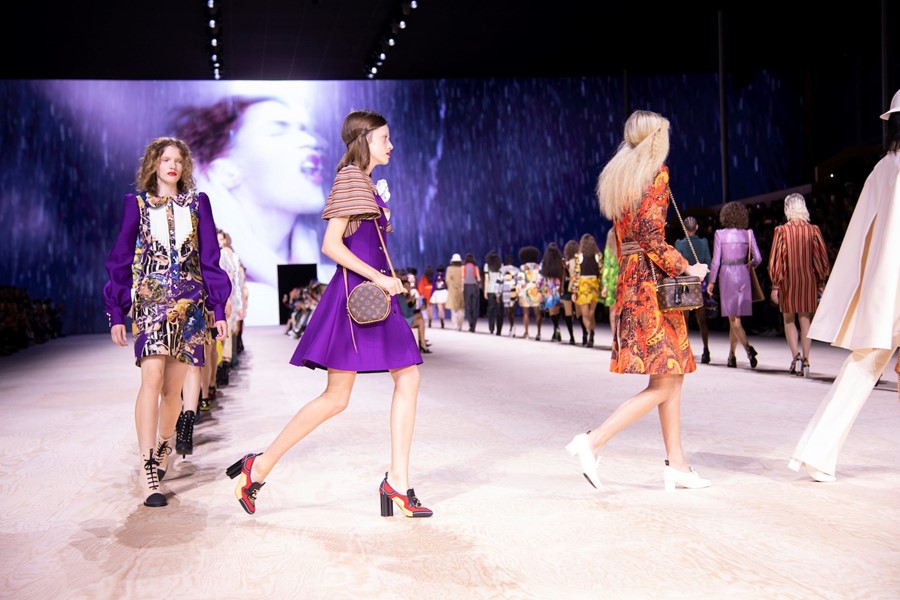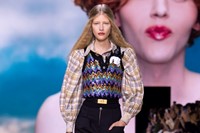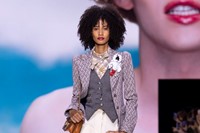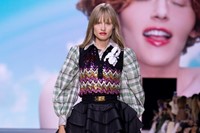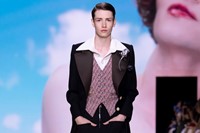At the close of Paris Fashion Week, Nicolas Ghesquière debuted a collection which reimagined a definitive era in French culture, the Belle Époque
Louis Vuitton’s latest collection was backgrounded by a vast, metres-high projection of the music video for SOPHIE’s 2018 song, It’s Okay to Cry. The Scottish experimental pop artist and producer – “the most important, boundary-destroying producer of the last decade,” according to Rolling Stone – had recorded a lengthened version of the video, in which she hovers amid clouds, specially for the house’s Spring/Summer 2020 show. Designer Nicolas Ghesquière described it as “a postmodern serenade”.
A postmodern serenade: the same could be said of Ghesquière’s collections at Louis Vuitton, and indeed at Balenciaga before, where he was previously creative director. In those years he has fashioned himself as perhaps the postmodern designer, his work a bricolage of unexpected juxtapositions; of high and low culture, of eras, decades, concepts. At Vuitton, he has proved particularly astute at refracting the house’s storied past through myriad reference points until you feel like you are looking directly into a bright, new future – or, if postmodernity demands that nothing can be new again, Ghesquière certainly has a knack of making it look like it is.
Recent collections have seen him leap between decades with dizzying speed – last season, he harked back to the 1980s, to Paris’ Beaubourg district and the women and men who gathered in front of the Pompidou centre; seasons before, he conjured elaborate Louis XIV frock coats, teaming them with silk boxer shorts and space-age trainers. This season, he continued his journey through time, back to the turn of the 20th century and France’s Belle Époque. In Paris, it is an era which continues to define the city’s appearance – in fact, it looms over it, in the form of the monolithic Eiffel Tower, which was built in 1887. Ditto the artworks of Théophile Steinlen, which you are hard-pressed to find a bistro or café without.
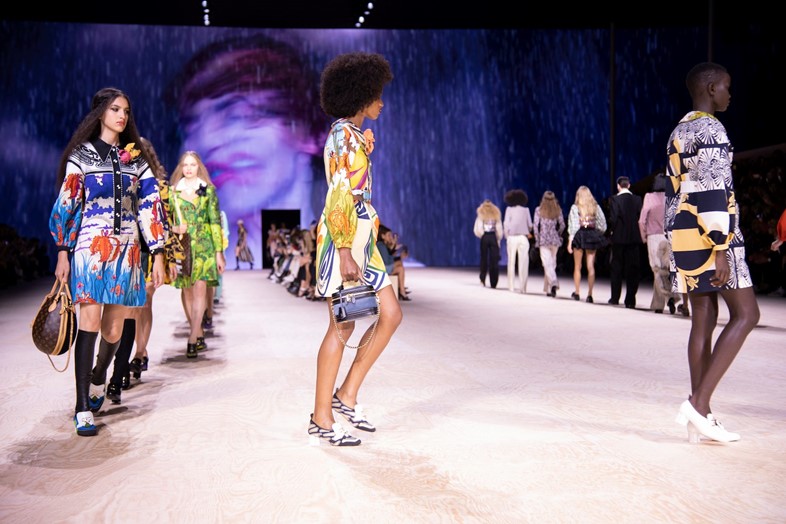
“We wanted to explore notions about what’s out-dated and old-fashioned, and nostalgia for a time we can only dream about,” Ghesquière explained. “The Belle Époque period provided the seed for this collection. It’s a part of French history that’s very interesting in art, as well as culturally, in terms of the emancipation of women, and, of course, in literature with Proust.” So there were billowing mutton-sleeve blouses and nipped tailored jackets; floral motifs inspired by Art Nouveau stained-glass windows, Gibson Girl bouffants, lace-trimmed stand-collar dresses, orchid corsages, “worn on the lapel like the chimerical symbol of ultimate refinement”.
There is a certain potency to recalling the Belle Époque at this current moment: it hung, after all, on the precipice of World War I, which marked its end. We are perhaps on our own cliff edge, facing a new decade (these Spring/Summer 2020 clothes will arrive in stores at the very beginning of the next) and an increasingly fractured world. Yet Ghesquière managed to enact a peculiar, seductive sense of hope – try not to be charmed by the zig-zagging sequinned sweater vests, or esoteric egg-shaped handbags – with a collection that straddled past, present and future, whatever that may be.
